Bright and beautiful Anishinaabe artist Jordan Stranger focuses on connection, spirituality and telling Indigenous stories
Read this article for free:
or
Already have an account? Log in here »
To continue reading, please subscribe:
Monthly Digital Subscription
$0 for the first 4 weeks*
- Enjoy unlimited reading on winnipegfreepress.com
- Read the E-Edition, our digital replica newspaper
- Access News Break, our award-winning app
- Play interactive puzzles
*No charge for 4 weeks then price increases to the regular rate of $19.00 plus GST every four weeks. Offer available to new and qualified returning subscribers only. Cancel any time.
Monthly Digital Subscription
$4.75/week*
- Enjoy unlimited reading on winnipegfreepress.com
- Read the E-Edition, our digital replica newspaper
- Access News Break, our award-winning app
- Play interactive puzzles
*Billed as $19 plus GST every four weeks. Cancel any time.
To continue reading, please subscribe:
Add Free Press access to your Brandon Sun subscription for only an additional
$1 for the first 4 weeks*
*Your next subscription payment will increase by $1.00 and you will be charged $16.99 plus GST for four weeks. After four weeks, your payment will increase to $23.99 plus GST every four weeks.
Read unlimited articles for free today:
or
Already have an account? Log in here »
Hey there, time traveller!
This article was published 04/11/2022 (1136 days ago), so information in it may no longer be current.
His art looms large.
Murals that soar above street corners, turning tired concrete into colourful vistas. Exhibits that call out colonialism with evocative installations. Paintings that capture centuries-old stories and sacred teachings. Corporate contracts that raise questions about the business of reconciliation.
Yes, Jordan Stranger’s art looms large — physically and ideologically — but it doesn’t start out that way.

The walls of his temporary Exchange District studio are littered with dozens of pale yellow Post-it notes. Inside the five-by-five-centimetre squares are sketches, in pencil and ballpoint pen, of bears and bison, flowers and flames, humans and hearts. Many of these images now exist in the world as logos, posters and public art pieces.
“This one’s a mural at The Forks,” Stranger says, pointing to a note with a pair of hands reaching out to one another.
Save for scale and colour, the ink drawing is near identical to the version of Together that lives under a brick archway in The Forks market. The mural represents the historic gathering place at the junction of the Red and Assiniboine rivers and is one of six installations the Anishinaabe artist from Peguis First Nation created for Manitoba’s 150th anniversary.
The series overlooks a bank of tables, where visitors can pause for a drink and a bite between shopping and sightseeing. A modern gathering place. Like most of Stranger’s work, elements of past, present and future are at play all at once.
Starting small is a practice Stranger, 33, picked up during a decade of working in ad agencies as a graphic designer. Simplicity is key in advertising, where attention and effectiveness are measured in seconds. If a concept can’t be conveyed quickly and clearly, the campaign is a failure.
It’s the same with a mural. Though he’s no longer hawking products, Stranger is still seeking immediate connection.
“Less is more,” he says. “How do I create an effective image with the least amount of room?”
His first foray into public art also started with sticky notes.
After his debut gallery shows in 2017 and 2018, Stranger took a step back to hone his style. Norval Morrisseau’s iconic Woodland paintings and Shepard Fairey’s political street art served as inspiration while he started experimenting with acrylics (at the time, coloured pencil was his go-to medium).
The result was bright and bold and cartoonish in its simplicity. Serious and playful — much like the artist himself.
During interviews, Stranger is stoic. His voice gets low and he talks about his life and art with a calm, calculated precision. It’s a story he knows inside and out because he’s told it many different ways in many different venues. Sharing his story with others is a responsibility he’s taken on for the sake of education.
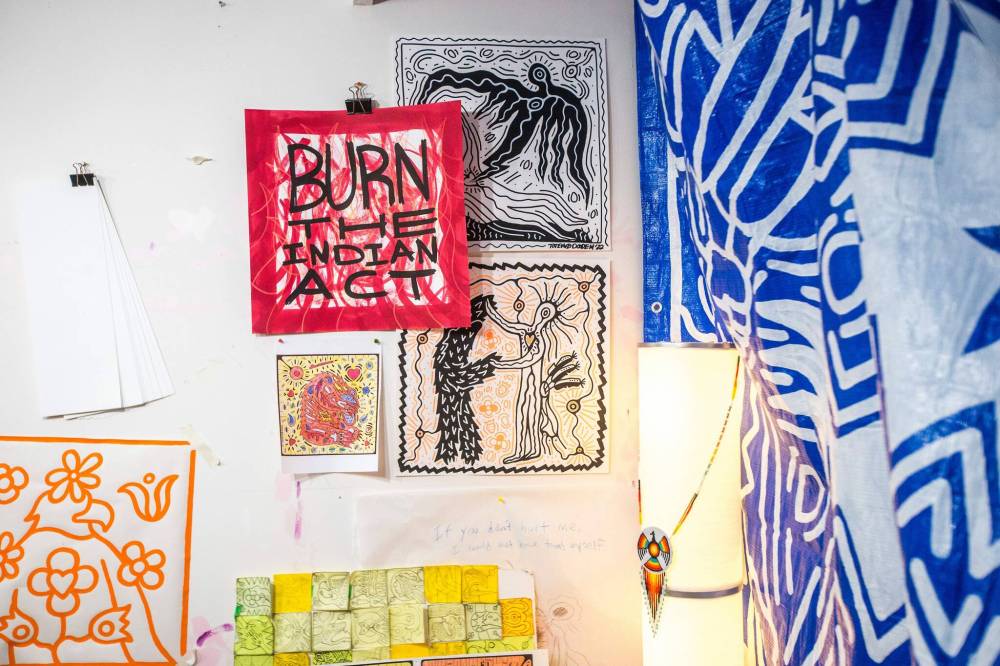
When the recorder is switched off, however, Stranger lets his guard down, cracking jokes, quoting TV shows and laughing at himself while trying to act natural in front of the camera. Joy is also foundational to everything he does.
“I hated the narrative around Indigenous people and art,” he says. “The negative parts, that was always being focused on, which is understandable given the circumstances and the severity of the crimes committed against Indigenous people.
“I want to see more positivity, I want to see more colour, I want to see the beauty, not the death and not the sadness all the time.”
When he was developing his style, Stranger spent hours in his basement, filling small paper squares with acrylic paint. He pasted them on buildings around Winnipeg with the signature “1871” — a nod to the year the first numbered treaties were signed in Canada.
“People started to notice,” he says.
He began working under the moniker Totem Doodem, an English-Ojibwa portmanteau meaning clan, and painted his first large-scale mural during the 2018 Wall-to-Wall Festival — a two-storey piece depicting Mother Earth at 196 Sutherland Ave. He received funding from the Manitoba Arts Council for an Artists in the Schools project and, within months, was designing logos and graphics for Festival du Voyageur, APTN, Shopify, Audible and Apple.
With a growing roster of clients, he left his salaried agency job and set out on his own as a full-time graphic designer for hire. It was a leap of faith that has opened doors and caused him to re-evaluate his goals as an artist.
Wayne Stranger is in no way surprised that his son is an artist — or that he’s finding success.
“In the Stranger family, everybody’s pretty much an artist and can do something,” he says over the phone from his home in Peguis, two hours north of Winnipeg. “And not just do something; they do it well.”
Wayne’s uncles were talented hyper-realist artists and, as a kid, he recalls seeing drawings in immaculate detail scattered around the house on napkins and scraps of paper. His father was a master carpenter who built the family’s first home from scratch.

Working with your hands, bringing an idea to life and overcoming challenges. These lessons, learned by osmosis, are what inspired Wayne to pursue his own art career as sculptor and, later, pushed his son to follow suit.
In speaking with the elder Stranger, it’s clear that Jordan’s voice is inherited. Father and son have the same rhythmic timbre — so much so that callers used to confuse them on the phone. They also share a penchant for sprawling storytelling.
When asked to describe his son’s upbringing, Wayne starts at the very beginning.
“Jordan was 12-and-a-half pounds when he was born,” he says. “He was a standout right from the get-go.”
The youngest of three, Jordan and his siblings grew up on the reserve immersed in their culture and language. They were given spirit names, attended ceremonies with elders and spent time on the land, learning how to trap and pick medicine.
It’s a way of life Wayne adopted as an adult and was determined to share with his kids.
“When I grew up, I wasn’t shown any of that,” he says. In his younger years, drugs and alcohol filled a void he couldn’t explain — his parents never talked about their time in residential school and terms like “intergenerational trauma” weren’t yet part of the popular lexicon. His first experience in a sweat lodge changed everything.
“I found that peace of mind I was so longing for inside that sweat lodge,” he says. “And I used that to live a much better life.”
That way of life changed in the early 2000s, when the family left Peguis and moved to Winnipeg. Newly divorced, Wayne was navigating life as a single father and first-time university student. He enrolled in fine arts at the University of Manitoba to study bronze sculpting and improve his circumstances. Welfare and the tobacco he received from running ceremonies wasn’t paying the bills.
“I told the boys… we’ve done ceremony here; we’re never finished that, that’s always going to be there. I want to show you something else,” Wayne says. “I’m gonna go to school and I want you guys to follow my example.”
It was a hard lesson. The city was unfriendly, school was challenging and the young Stranger felt disconnected from the land and his community. They returned to Peguis occasionally to take part in sweats and Sundance ceremonies, but his teenage years were rudderless.
Art became an anchor.

At home, Jordan and his brother drew together for fun — cars they fancied, favourite Pokémon and Dragon Ball Z characters. They visited the university art studios and spent days running around The Forks while their dad sold soapstone carvings to passersby from a table in the Johnston Terminal.
Screen-printing classes in high school allowed him to explore an interest in graffiti art and apparel design. He struggled with direction and personal demons after graduation, but eventually enrolled in the graphic design program at Red River College Polytechnic.
For Jordan, school pulled everything into focus. He gained technical skills while learning how to pitch ideas, negotiate contracts and market his work. He found purpose in the principles of design and mentorship in his instructors.
“Finding that (artistic) style was exciting and I discovered things about myself I didn’t know,” he says.
For Wayne, school pushed his disadvantages into sharp relief. He was winning awards and working on advanced projects, but, as the only Indigenous student in his faculty, he was overlooked for opportunities afforded to his colleagues. Simply being on campus was an education in contrast.
“I started looking objectively at the other students coming to school and being dropped off with nice attitudes and good outlooks on life,” he says. “Is this what the good life looks like? To grow up in a loving, caring home without abuse and riddled with alcohol?”
For the first time, Wayne connected the dots between the dysfunction at home and the residential schools his relatives were forced to attend.
“Holy shit,” he says. “It turned them into monsters.”
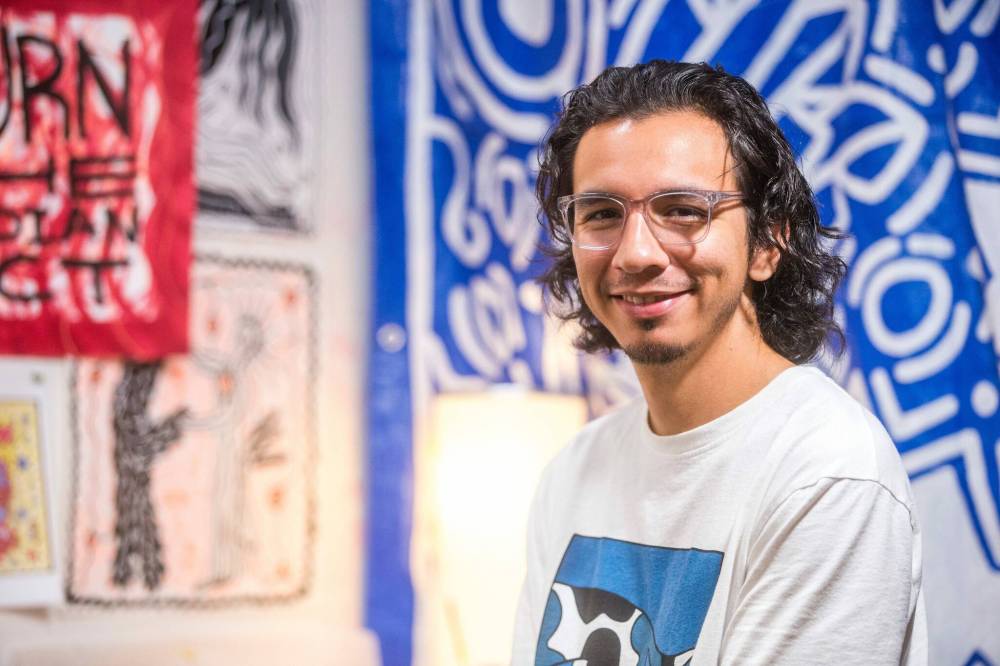
After graduating, Wayne had a hard time finding work in the art world. He got a degree in education and spent seven years teaching high school — although never in his area of specialty.
He’s since left the field to focus on his craft full-time and runs an art foundry, Stranger Bronzeworks, on his property in Peguis, where he pours molten metal into lost-wax castings. His large-scale sculptures are on display at the University of Manitoba (a pair of bison rising into the sky) and Sagkeeng First Nation (a jingle dancer mid-step, in honour of Missing and Murdered Indigenous Women and Girls from that community).
In speaking with Wayne, it’s clear his career hasn’t unfolded the way he would’ve liked. Not yet, at least. It’s also clear that he’s immensely proud of his son and his work ethic. Immensely proud that a Stranger is getting the recognition they’ve long been denied.
Whenever Wayne comes to Winnipeg, he stops at The Forks for breakfast or an order of fish and chips. He takes the food to go and sets his tray down on a table in the sunlit mezzanine where his son’s murals live under brick archways. He sits and he marvels.
“Proud is the word, although it might be too simple,” he says. “This kid’s got it in spades.”
Stranger’s star is rising at a critical moment in Canadian history.
For the first time, there is widespread acknowledgement of the cultural genocide carried out against First Nation, Métis and Inuit communities through Canada’s Indian Residential School System.
While this truth has been on record for years — through survivor testimony, court cases and the work of the Truth and Reconciliation Commission of Canada — the discovery of unmarked graves at school sites across the country last year sparked a reckoning among the general public. For Indigenous families with ancestral trees full of missing branches and mangled limbs, the fact that children died in these institutions has been an open secret for generations.
It comes up during our first conversation in late July 2021, two months after the first 215 unmarked graves were identified on the grounds of the Kamloops Indian Residential School in British Columbia.
It’s a sweltering afternoon and we’re sitting at a shaded picnic table after trekking through the trails at FortWhyte Alive to find a teepee Stranger designed for the nature centre. The teepee is situated in a clearing next to a small lake, the canvas emblazoned with a Seven Sacred Teachings motif — love, truth, respect, wisdom, humility, honesty and courage — and covered in animals and blocks of orange, red, green, blue, yellow and purple paint.
After rattling off his schooling and curriculum vitae, Stranger brings up one of his first solo shows: I Am Not An Indian, a 2018 exhibit at the Graffiti Gallery about the legacy of residential schools. The installation included a giant printout of the Indian Act and piles of dirt arranged in rows to represent the children who died under its mandate. To get to the artwork, visitors had to walk over the graves.
“It was really hard for people to do,” Stranger says. “But that’s the reality we have to live with every day. My grandparents went (to residential school). My mom and dad went to day schools. They’re the reason why I do what I do,” his voice cracks momentarily, “because without them surviving and working as hard as they do, we wouldn’t have our culture, we wouldn’t have our ways.”
He’s just returned to the city after a month away, road-tripping around the province and taking part in the annual Sundance at Peguis. A mix of emotions swirl close to the surface.
“I feel clear in the mind and just happy and emotional with the time that I got to spend on the land and with people I really appreciate being around,” he says. “People that joke all the time, that make you smile, make you laugh and tease you a little bit.”
Stranger has been taking part in Sundance since he was 15 years old. It’s a four-day ceremony pinned to the full moon and the hottest days of the summer. Participants fast and spend the days dancing, praying, drumming, singing, piercing their skin and making offerings from sun-up to sundown. It’s an opportunity to work through the things going on in your life and the world.
“This year, we prayed for all those children to come be there with us — and they were… it was a really heavy, heavy day,” he says. “Sundancers carry the weight of the world; they dance for all people, not just one group. That’s the sacrifice you’re willing to make. It’s just four days out of the year, but you have to be able to walk that road until you come back next year.”
Stranger is wearing a backwards baseball cap, dark sunglasses and an orange T-shirt he designed for the Winnipeg Foundation. The words “Every Child Matters” encircle a pulsing flower floating above figures of children, trees and teepees. He’s created other Orange Shirt Day designs for Indigo, Arctic Co-op and CBC Radio-Canada.
While working with large companies is a chance to share his perspectives with a wider audience, it’s a relationship that can be fraught with pitfalls.
“To be able to tell stories that I’ve been told, that I’ve earned the right to carry, is an honour,” he says. “There’s a lot of interest right now in Indigenous stories and culture. I just hope that they’re coming from the right places. And that they’re not just using this for content because it’s trending.”

Ahead of this year’s National Day for Truth and Reconciliation in September, Stranger was hired by the Manitoba Liquor & Lotteries Corporation to design a shirt that would be made available to staff and the public. He considered the optics of entering into a contract with an organization that regulates drugs, alcohol and gambling, but saw an opportunity to educate employees.
“It had nothing to do with trying to change the narrative around what they do,” he says. “I looked at it as: we’re all human beings, we’re all people and we all have to learn, and just because you’re working for a Crown corporation, you’re not exempt from what happens in this country.”
In May, Stranger organized a pipe ceremony with elders from Peguis that was attended by the corporation’s executive board and its program manager of diversity, equity and inclusion. The goal was to teach leadership about the design — which features an Indigenous family embracing, surrounded by medicine — and open a meaningful dialogue about reconciliation and the lasting impacts of residential schools. It’s something he tries to do with all his corporate clients.
“Whenever I’m working with organizations and people, they want to throw a little bit of money at this idea,” he says. “No, you have to go all in or nothing nowadays. You have to be willing to contribute and really understand.”
Based on conversations with the MBLL, Stranger was under the impression that an Indigenous-owned business would be hired to print the shirts and that proceeds from their sale would be donated to a survivor support group. These expectations weren’t binding. Still, it was disappointing when neither materialized.
“I was pretty livid,” Stranger says.
The MBLL describes the situation as a miscommunication, albeit a regrettable one.
“We take full accountability and full responsibility,” president and CEO Manny Atwal says in an interview. “It opened our eyes to see that our processes, while good intentions were in place… they need some work.”
The situation, which was covered by local media at the time, has prompted the organization to work on removing barriers to its tendering process while continuing to engage in reconciliation efforts internally, Atwal says, pointing to pre-existing charitable giving and employee training programs as examples. “Our intention is to improve overall relationships with Indigenous communities.”
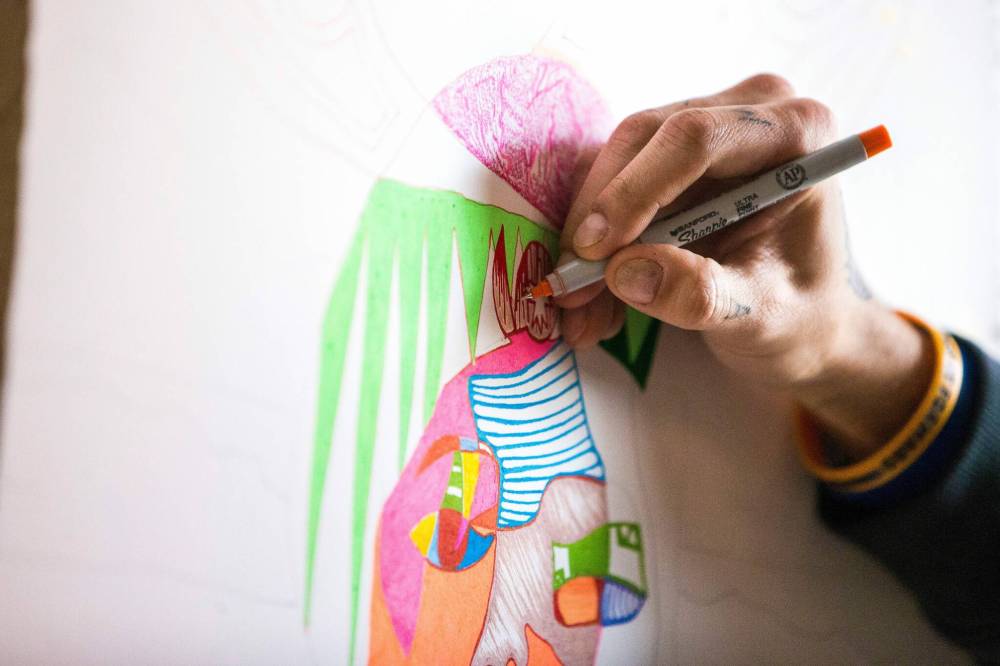
Improving relationships without performance and tokenism requires an ongoing commitment beyond the observance of a national holiday, says Kaila Johnston, supervisor of education, outreach and public programming with the National Centre for Truth and Reconciliation.
Reconciliation for the sake of reputation is a losing game, particularly at a time when consumers are becoming more aware of Canada’s colonial history and, in turn, are more likely to hold businesses accountable for their actions or inactions.
“Not addressing reconciliation hurts the bottom line,” Johnston says, pointing to the TRC’s Call to Action 92 as a good starting point. “A lot of it is exploring what that history is between your business or organization and the communities that you’re serving. Who’s not at the table? Who needs to be invited to that table?”
As an independent contractor, Stranger often isn’t privy to whether or not his clients are operating in good faith. After this most recent experience, he’s hesitant to work in the corporate sector at all.
“I’ve considered, now, not working with anybody,” he says. “Our families have suffered, and they’re still suffering. The pain is still there. And when things like this happen, it makes it even worse.”
After a whirlwind few years, Stranger is in a moment of transition.
He and his partner are expecting a baby in January. Bringing new life into the world has caused him to re-evaluate what’s important and how he wants to spend his time. Instead of building his Totem Doodem portfolio with new projects and bigger clients, he’s focusing on taking care of its foundation.
Over the last year, Stranger has bounced around between studio spaces and filled his plate with deadlines. Recently, he’s settled into a more peaceful rhythm.
“Things have been reshuffled for the better,” he says, while sitting in the basement of the South Osborne home he shares with his partner and their two cats. He sounds lighter, more carefree.
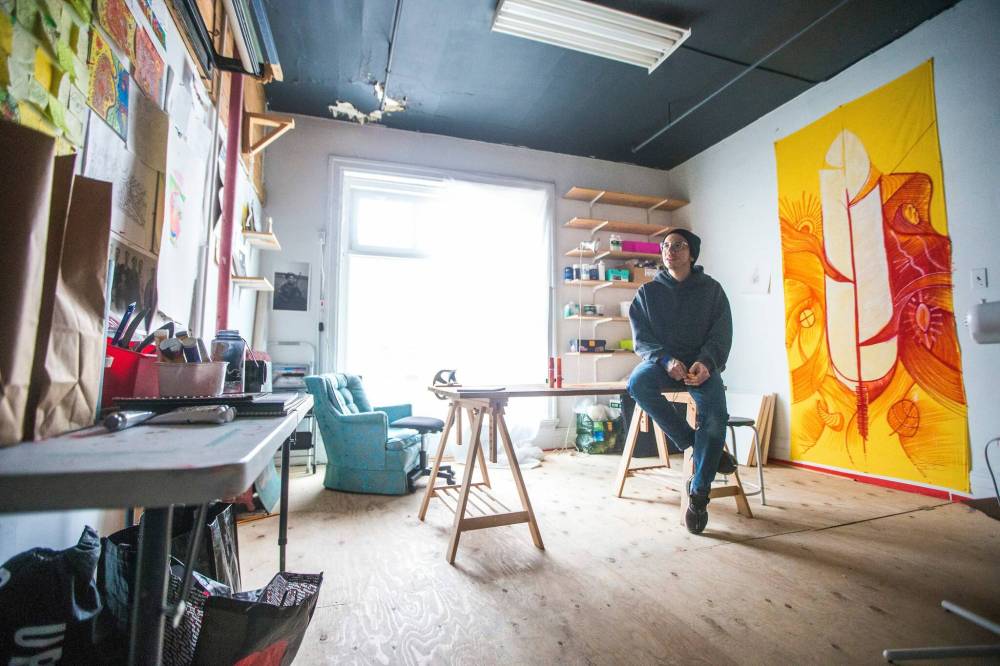
The walls are covered with works in progress for a forthcoming show, titled Manitou, which will dive deep into Stranger’s spiritual journey. He’s playing with new media and canvas, like stained glass, sculpture and blue plastic tarps — the kind used to cover the sweat lodges he grew up in. The goal is to show the work in 2023, but the timeline isn’t set in stone.
On a table nearby, there’s a pile of papers and art supplies, where his eight-year-old son, Jaymee, has been busy drawing pictures of Pokémon characters in marker and pencil crayon.
Pretty much all the Strangers are artists.
Through his art, Stranger hopes to make the world a little brighter, a little more colourful for his kids.
“I want to leave knowledge. I want to leave this,” he says, sweeping a tattooed hand toward the wall of paintings, Post-it notes and family pictures. “So they can use this for their own identity.
“Knowing who you are, where you come from, you can be anything you want to be.”
eva.wasney@freepress.mb.ca
Twitter: @evawasney
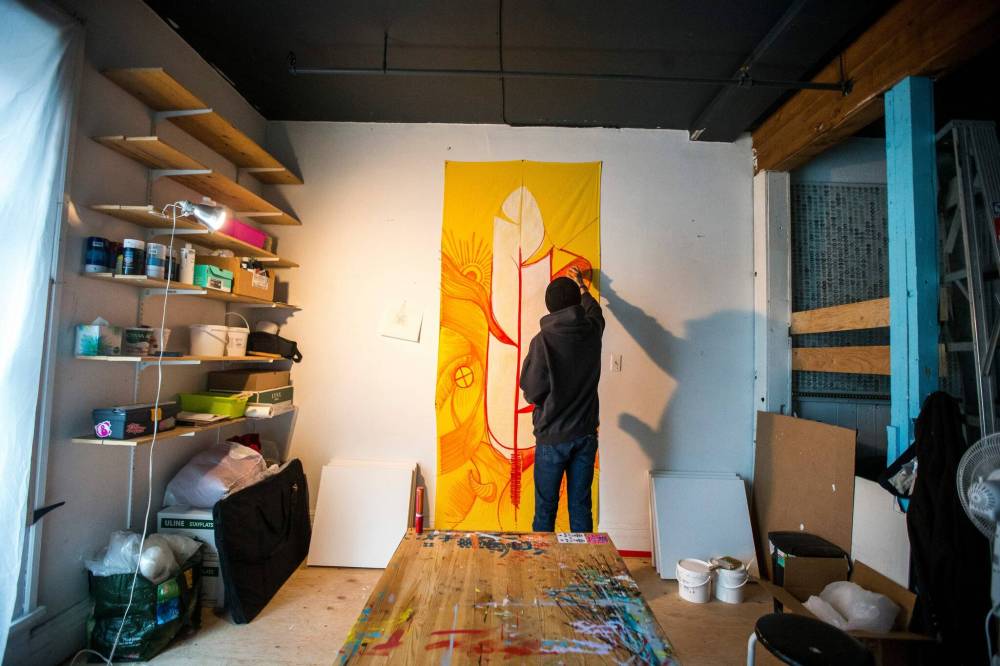

Our newsroom depends on a growing audience of readers to power our journalism. If you are not a paid reader, please consider becoming a subscriber.
Our newsroom depends on its audience of readers to power our journalism. Thank you for your support.






